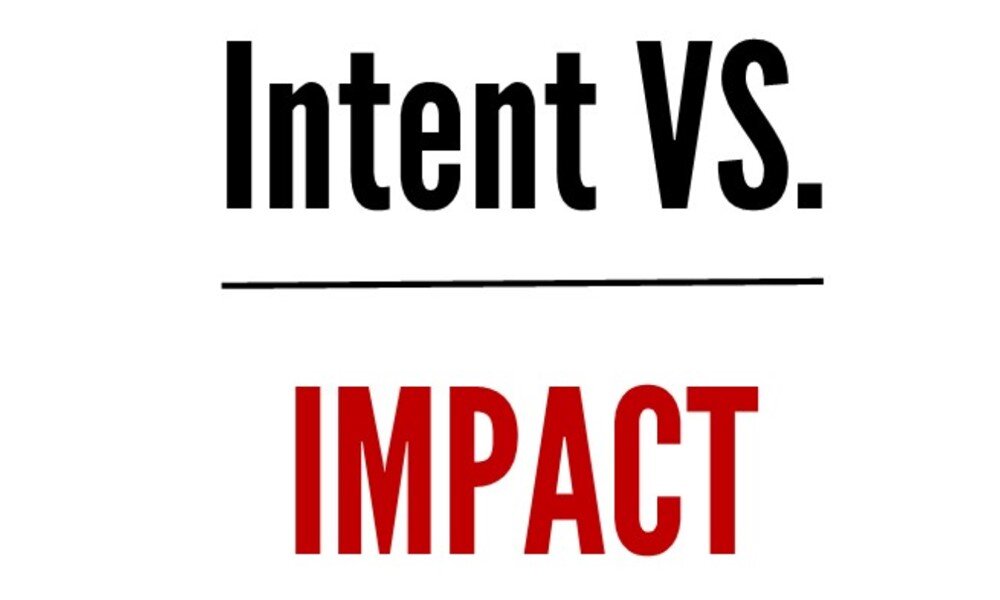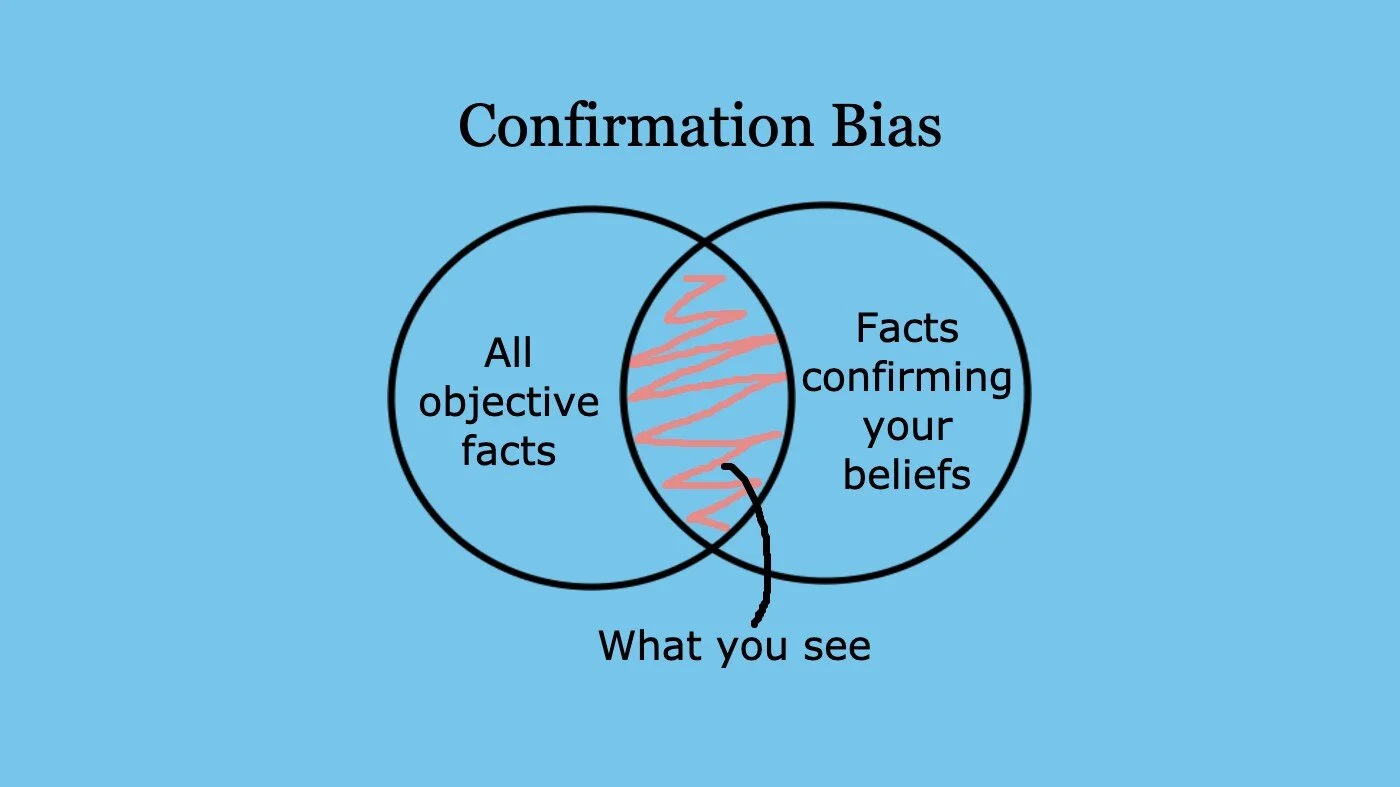Coaching Insights
Intent vs. Impact
Intent vs. Impact
- Most people have a positive intent, but without transparency and context, their message lands with poor impact.
- Please remember to state your intention and explain the context. Don't assume they are obvious to others.
Toxic Positivity
As a leader, be careful about pretending everything is great when people bring problems to your attention.
No-one wants to hear complaints, and it's fair to ask people for recommendations and solutions. But killing messengers doesn't solve problems, it only destroys morale. When people share concerns, don't just smile and pretend the problems don't exist.
Ask open-ended questions to dig into the issue. Challenge the team to make recommendations, then take a decision and support the team to implement a solution.
Being Too Humble
Humility is not always a badge of honor. If you don't see yourself as valuable enough, you let opportunities for empowering yourself and others slip away.
Instead of underlying your value (or overpaying it), make an effort to assess your accurate impact on others. You can do it informally by asking teammates for feedback and keeping track of what they say.
If you find yourself dismissing appreciation, perhaps your challenge is to take it in more.
Confronting Employee Mistakes
Confronting Employee Mistakes
- Don't dump on the employee out of anger / disappointment
- Ask EE to walk you through their thinking
- Identity any lack of context, experience, judgment, etc. Coach each one separately and model accountability by owning your part.
- Explain your expectations and highlight the gap between them and the work product.
- Ask the EE for a plan to close the gap.
Mediation Secrets Every Professional Should Know
In this presentation, I answer the following questions:
- How people get into conflict
- What can be done to help end conflicts
- Explain the three-step mediation process anyone can use
Confirmation Bias
What is it? Paying attention to data confirming your belief and ignoring data that refutes it.
- Organizations need to categorize employees for compensation, promotion and other administrative reasons.
- It is dangerous for managers to regard employees differently based on these categories. As humans, we are susceptible to start believing that these labels, which we assigned are ‘real’ and belong to the employee.
- Being labeled feels dehumanizing. Noticing that your manager is more distant toward you than to your colleagues can be highly demoralizing.
- For leaders, succumbing to confirmation bias can lead to productivity & morale problems, turnover, accusations of bias, HR and legal issues.
- While employees are part of a team, everyone should feel equal regard, respect and patience from their leader.
Delegating vs. Delegating Away
When managers delegate work, they are still the ultimate owners of that work. They are most effective by setting the vision, expectations, dealing with obstacles and tracking to make sure work is getting done.
Some managers delegate as clients. They see their role as receiving the completed work without being bothered with the challenges of doing it.
This can result in a serious morale problem for the team, as they feel the leadership vacuum.
This is sometimes called “seagull management” and it hurts the team!
Skill vs Will
If an employee is underperforming, it's important to understand whether the cause is 'skill' or 'will' based.
If the employee lacks skill, you can help them by offering training, mentoring or coaching them to help them grow into their role.
If the employee lacks the curiosity or will to learn, then they are in the wrong role.
In your role as manager, ask your employee to assess themselves.
Once they decide if they are committed to their job (or not), the path forward will be clear.
Negotiation: Battle or Dance?
Going into a negotiation anticipating a battle makes the brain go into survival mode and doesn't allow it to think creatively.
Instead, think of a more useful metaphor, like dancing. Good dancers know how and when to push, pull, step and collaborate to create something new that benefits them both!
Set up your brain for success by choosing the metaphor you need to be creative, flexible and a good negotiation partner!
Talk-to-Think or Think-to-Talk?
Do you like to process your ideas by talking them out? Or thinking through everything before you share it with others?
When people with different styles work together, one style may frustrate the other. One solution - know thyself and let others know that it's your style talking (or not).
Also, Talkers - let people know that you're just processing, and make room for others to speak. Thinkers, take a chance and offer an idea that may not be fully baked, but might inspire others.
Dealing with Resistance
Dealing with resistance…
it's natural to feel apprehensive: our brains are wired to anticipate bad news;
we make meaning of our anxiety by imagining a bad outcome;
we reverse this in our minds and tell ourselves that it's the reality of the outcome that's causing the anxiety.
To deal with resistance,
normalize the feeling: let people know it's ok to feel apprehension / anxiety;
listen to their concerns: it will make them feel acknowledged and provide some potential issues to address;
ask them to distinguish between their real feelings and the imagination of future events that may not be so likely.
Tikun Olam and Social Justice
A year ago I published an article:
A year later, I want to reflect on the progress made, the work ahead, and acknowledge two organizations that helped shape my thinking: Coro and the Wexner Foundation.
Tikun Olam is Hebrew for 'Repair the World.'
My way of doing this is teaching, mediating and coaching.
What's yours?
Running Effective Meetings
Make sure your meetings are outcome-based. What will you accomplish? How will the participants be better off by the end?
Share an agenda ahead of the meeting. If part of the meeting goal is to socialize/check-in, state that explicitly.
Rotate facilitators. Let junior people have a chance to plan and run the meeting. While they are doing it, you can take the balcony view to observe the group dynamic.
Audit your meetings from time to time. A meeting that once had a purpose can be eliminated if it has become a 'generic Monday meeting'.
Can a Manager Be a Mentor?
Power: How does the manager address the power difference between them and the mentee
Agency: Is the mentor ready to support the mentee in a move that doesn't benefit the manager (like a transfer or a new job)?
Transparency: What's the reason the manager wants to be a mentor? If it's to improve team performance, that's the role of a manager. Mentorship is about giving/sharing, not leveraging.
The TRIP Model of Conflict
Topic: are you discussing the same thing?
Relationship: who are you to each other? For example, friends who work together or coworkers who are friends outside of the office?
Identify: how do you (and the other person) want to be seen by others?
Process: how will you deal with a conflict? A private conversation? Bring in other people? Post on Social Media? Sometimes people who don't find satisfaction in the Topic, Relationship or feel their Identity challenged, will change the process to feel satisfied.
Dealing with Upset
When I am upset, I ask myself three questions:
What am I sensing? For example, is my heart racing?
What 3 feelings am I experiencing? The 3rd one usually brings me insight.
What meaning is by brain making from the situation? Am I 100% at fault, 0% at fault, or somewhere in the middle? If so, what's my stuff and what is not?
The act of asking myself these questions slows me down enough to avoid saying something that creates a bigger issue. Also, once I am more clear on what's happening, and what I want, I am in a better place to have a conversation with the other person.
Running Ahead of the Train
A client was concerned they were not selling enough, but the Sales Manager didn't see a problem. The Client was too focused on scoring internal points and not enough on listening to customers. I offered three approaches:
Slow down and listen to the customer. Look for opportunities to solve their problem rather than push the sale.
Use others' perspective to validate your own. If the Sales Manager isn't concerned, maybe it's not an external problem.
Have a conversation with your ego. When does it serve you, and when does it run ahead of the train and take over?
Fear of Rejection
Fear is normal, but limiting. It’s based on our evolution, doesn't apply today.
Listen to the signal, but put it in its proper place.
Ask for help; if you are not getting rejected some time, you're probably not taking enough chances.
Asking the Obvious Question
Just because the question seems obvious and you don't know the answer, doesn't mean it's a bad question.
Don't let your ego stand in the way of asking and learning.
If others also don't know the answer, it's likely that the question needs to be answered by your leader.
If you are a leader, praise is not enough. Explain how the work of your people fits into the big picture to provide a sense of contribution.


















